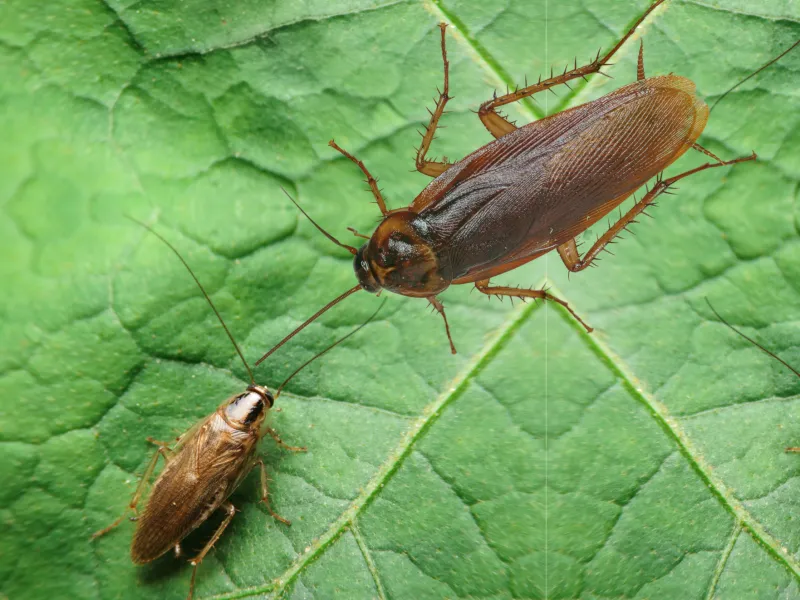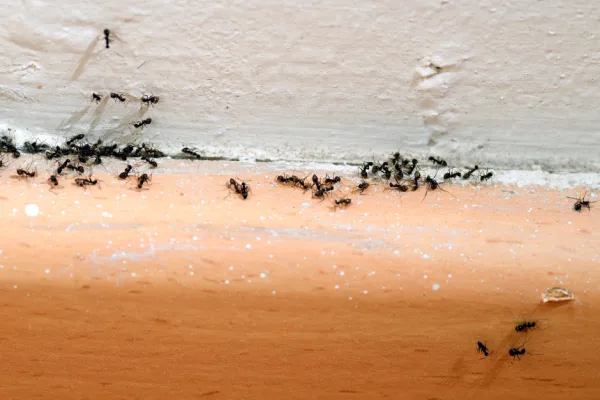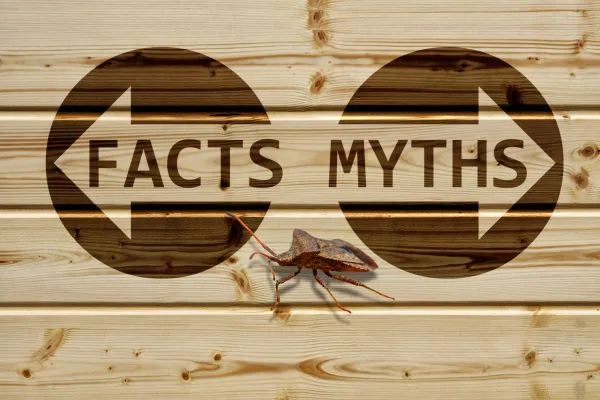German & American Cockroach Differences

Cockroaches—just the thought of them makes most people cringe. But did you know that not all cockroaches are the same? Two of the most common species you might encounter in South Carolina are German cockroaches and American cockroaches. While they may look similar to the untrained eye, these two pests have distinct differences in their appearance, behavior, and the challenges they present.
Our experts at Palmetto Exterminators are breaking down the key differences between German and American cockroaches so you can better understand the problem and how to address it effectively.
German Cockroaches: The Small but Mighty Invader
German cockroaches (Blattella germanica) are the most common cockroach species found indoors. Despite their small size, they're a big problem, mainly because of their rapid reproduction and preference for living in human habitats.
German Cockroaches Identification
German cockroaches are smaller than their American counterparts, measuring about ½ to ⅝ inches long. They're light brown to tan in color, with two dark, parallel stripes running down their backs, just behind their heads. While they have wings, they rarely use them to fly.
Behavior and Habitat
German cockroaches thrive in warm, moist environments and are often found in kitchens and bathrooms. They are nocturnal and prefer to hide during the day, making them difficult to spot until their population has grown.
What makes German cockroaches incredibly challenging is their rapid reproduction rate. A single female can produce up to 400 offspring in her lifetime, so a small infestation can quickly become a significant problem. They're also highly resilient and can survive on a variety of food sources, from crumbs to grease and even cardboard.
The Risks of German Cockroaches
German cockroaches are more than just a nuisance. They can contaminate food, trigger allergies, and spread harmful bacteria like Salmonella and E. coli. Because they reproduce so quickly, acting fast when you spot even one is crucial.
American Cockroaches: The Big, Bold Pest
American cockroaches (Periplaneta americana), often referred to as "water bugs" or "palmetto bugs," are the largest cockroach species commonly found from Greenville, SC to Raleigh, NC. While they're not as sneaky as German cockroaches, their size and speed make them just as unsettling.
How to Identify American Cockroaches
American cockroaches are much larger, measuring 1.25 to 2 inches in length. They're reddish-brown with a distinctive yellow or tan figure-eight pattern behind their heads. Unlike German cockroaches, American cockroaches are strong fliers and can cover short distances in the air, making them more mobile.
Behavior and Habitat
Unlike German cockroaches, American cockroaches are more commonly found outdoors. They prefer damp, dark areas like basements, crawl spaces, sewers, and drains. However, they'll move indoors when temperatures drop or during heavy rains, seeking warmth and moisture.
American cockroaches are less prolific breeders compared to German cockroaches, but they can still cause trouble when they invade your home. They're often attracted to food crumbs, garbage, and pet food.
The Risks of American Cockroaches
While American cockroaches are less likely to hide inside your home year-round, they can still spread bacteria and contaminate surfaces. Their large size and ability to fly make them particularly startling to encounter, especially indoors.
Key Differences Between German and American Cockroaches
German and American cockroaches are two of the most common roach species found in homes and businesses, but they have distinct differences in size, appearance, behavior, and habitat.
Size
German cockroach: Smaller, about ½ to ⅝ inch long.
American cockroach: Much larger, growing up to 1½ to 2 inches long.
Color & Markings
German cockroach: Light brown to tan with two dark stripes running down its back.
American cockroach: Reddish-brown with a yellowish figure-eight pattern behind its head.
Habitat & Preferred Environment
German cockroach: Primarily an indoor pest, preferring warm, humid areas like kitchens and bathrooms.
American cockroach: Can survive indoors and outdoors, often found in basements, crawl spaces, sewers, and drains.
Behavior
German cockroach: Moves quickly, hides in tight cracks and crevices, and prefers to stay near food and moisture sources.
American cockroach: Can be seen scurrying across floors and walls, is more likely to fly, and is often found in damp, dark areas.
Reproduction & Infestation Risk
German cockroach: Reproduces rapidly, with a single female capable of producing up to 400 offspring in her lifetime, making infestations harder to control.
American cockroaches: Reproduce more slowly, but still pose a problem in damp environments.
Health Risks
German cockroaches: Major concern for food contamination, bacteria spread, and triggering allergies/asthma due to their droppings and shed skins.
American cockroach: Also spreads bacteria, but is more commonly associated with sewer infestations and poor sanitation issues.
Which One Is More Problematic?
German cockroaches are harder to eliminate due to their rapid reproduction and preference for hiding indoors.
American cockroaches are more noticeable but infestations tend to grow more slowly.
Both species require professional pest control for effective removal. If you're seeing cockroaches, Palmetto Exterminators can help protect your home or business in the Carolinas.
How Palmetto Exterminators Can Help
Cockroaches are notoriously tricky pests to eliminate, and DIY treatments often fall short. That's where Palmetto Exterminators comes in! With decades of experience serving the Carolinas, we know how to handle even the most stubborn cockroach infestations.
Don't wait until the problem gets worse! Contact Palmetto Exterminators today to schedule an inspection or learn more about our customized pest control solutions. Let us help you take back your home from these unwelcome invaders.


